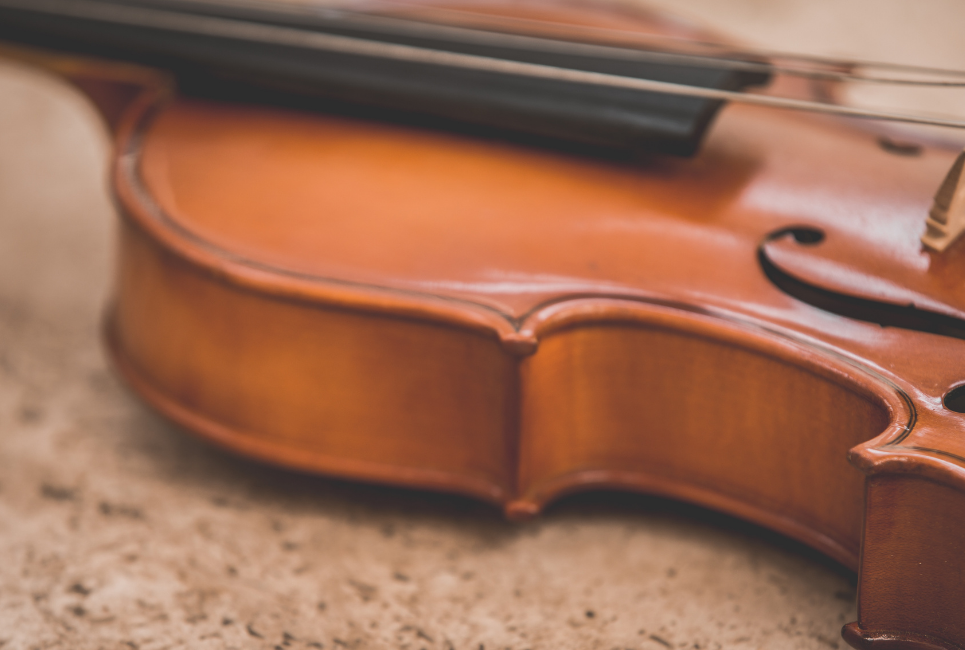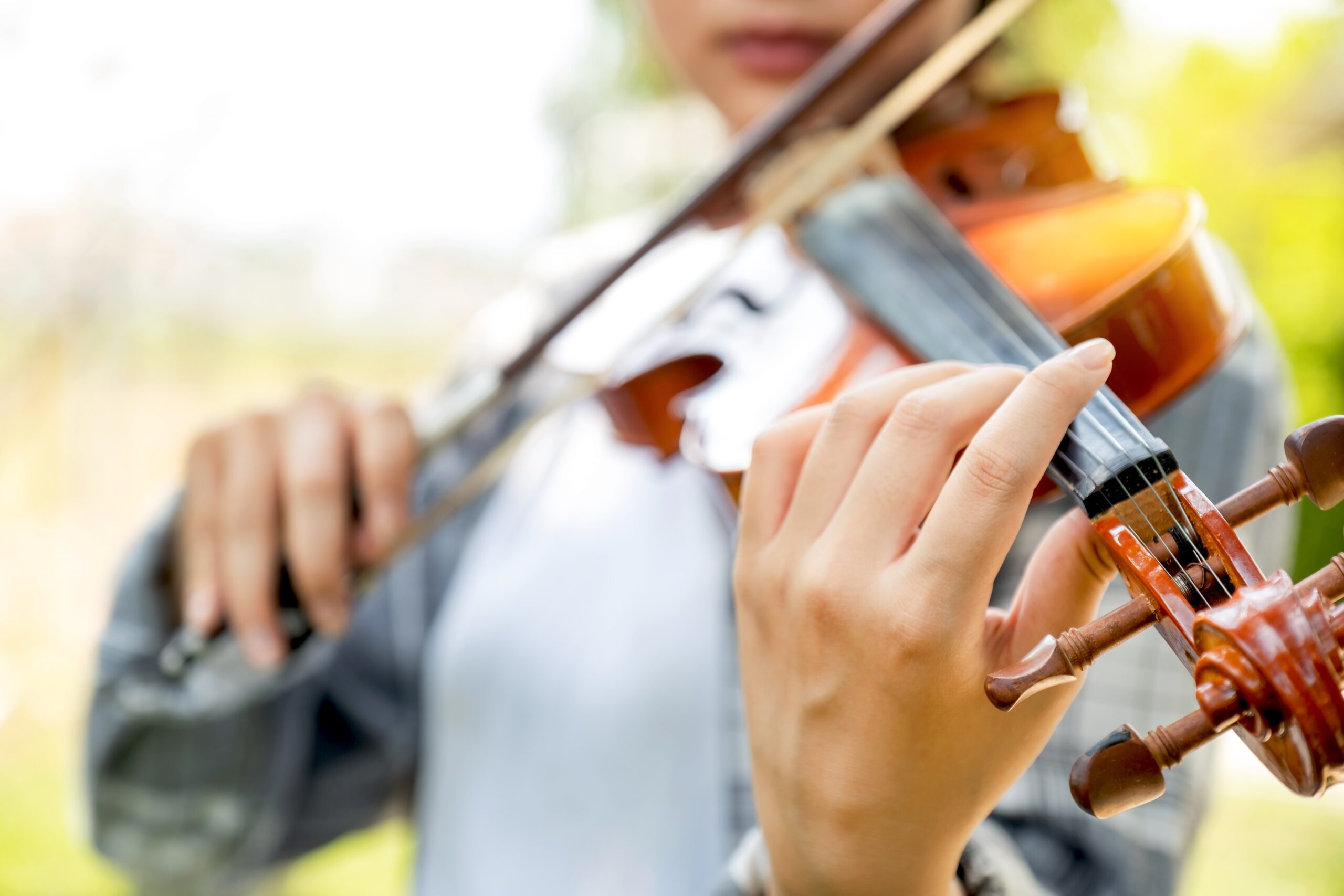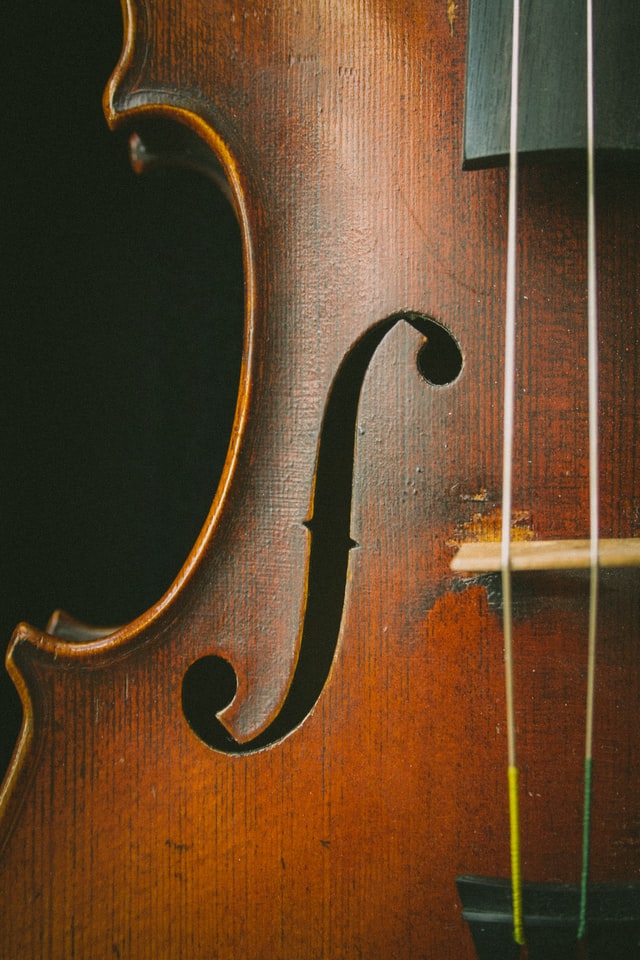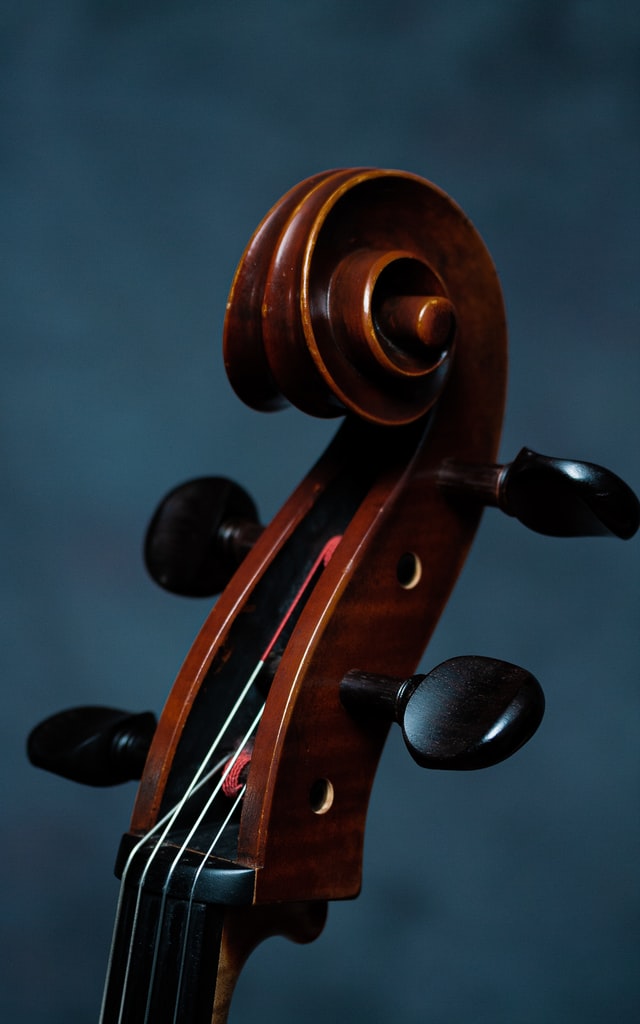- How to Find the Best 5 String Violins - April 21, 2022
- How to Hold a Violin Bow - April 21, 2022
- How to Hold a Cello Bow - April 17, 2022
Summary: Knowing how to find the best 5 string viola means picking the right size, deciding whether the sound suits your musical needs, and getting the right accessories.
If you are trying to find the best 5 string viola, you need to know what size instrument is right for you. You also need to know what materials are used and whether the sound produced by the 5-string viola is a good fit.
What Is a 5 String Viola?
A 5-string viola is a viola that has a C, G, D, A, and E string. This means it is a viola but with the 5 strings of a violin. It is a slightly larger instrument compared to a 5-string violin or a 4-string viola, and because of its larger size, it has more air inside to resonate sound and a more oscillating tone that gives a broader, richer sound.
Many beginner viola players are unsure how to pick out the right instrument. They do not know what to look for, what size they should pick, or how to find the best five-string viola. I was the same way. When I started, I was far too confident about my previous experience with violins and cellos, so I arrogantly knew what “size” I would need, only to learn very quickly that a 5-string viola is not sized the same way.
Is a 5 String Viola Better Than a Violin or Fiddle?
The 5-string viola is bigger than a 4-string viola, bigger than a violin, and slightly larger than a five-string fiddle. It produces a different sound than these counterparts and is also larger to hold. For that reason, not everyone is comfortable with the size or the sound it produces.
The top E string on a 5-string viola usually gives a slightly thinner sound compared to a 5-string violin. However, you can compensate for this with a heavy gauge E string (I also use a heavy gauge A string).
Who Should Play the 5 String Viola?
The 5-string viola is unique in the sound, tone, and quality it produces which makes it the perfect instrument for specific genres.
- The viola is a better choice over a 5-string violin or fiddle if you want a deeper sound.
- If you need a sound spread over a larger body so that your string instrument can be heard in a group of other instruments, then consider the 5-string viola.
- If you want a darker tone, you should consider the 5-string viola.
- Those who play Celtic music, folk music, blues, or jazz might consider playing the 5-string viola.
If possible, you should play different 5-string violas at a music shop before you buy so that you can hear the sound it makes and decide whether that sound works for the type of music you are playing. This is also a great opportunity for you to test the size of the instrument and make sure you know exactly what size fits into the crook of your arm.
When I was first starting, I had no idea what a darker or deeper sound was compared to my 5-string violin. However, just being able to play a couple of different instruments from three or four manufacturers helped me to better appreciate the difference in sound.
There are dozens of top-of-the-line manufacturers for 5 string violas, and some of them specialize in instruments specifically for beginners while others specialize in more advanced or intermediate instruments. Based on your skill and your current musical knowledge, you can find a manufacturer that produces instruments appropriate for your situation.
What Is the Best Size for a 5 String Viola?
The viola is a little more challenging than a cello or a violin. Cellos and violins have standard, universal measurements so you pick based on the size of the instrument, and sizes are delineated by fractions.
This is not the case with a viola. Violas are sized based on how long the actual instrument is, so you can find very precise measurements for an instrument that correspond to the precise length of your arm.
I prefer being able to buy a viola based on inch measurements because, as someone smaller than average, I get an instrument that much more perfectly fits my body compared to other stringed instruments.
Most violas range in size between 12 inches and 17 inches. The most common measurement for adults is about 16 inches.
Note: The “size” of a viola is for the length of the back or body, not including the neck, the scroll, or the end button.
To measure for a viola, you need to extend your arm completely so that it is parallel with the ground, meaning your arm should be straight out. Measure from your neck down to the center of your palm. This should give you the length of your arm in inches so that you can find the right size for the best 5-string viola.
| Viola Size (in inches) | Arm Length (in inches) | Age |
| 12 | 20.5″ – 21.9” | 7-9 |
| 13 | 22” – 23.4” | 9-11 |
| 14 | 23.5” – 24.9” | 11-14 |
| 15 | 25″ -25.9” | 14+ |
| 15.5 | 26″ – 26.4” | 14+ |
| 16 | 26.5″ – 26.9” | 14+ |
| 16.5 | 27” + | 14+ |
One of the things you might notice when it comes to the size guide of your five-string viola is that arm-length matters more than age. It must be a comfortable fit for your body and not just how old you are. But once you reach 14 or older, then you do not want to purchase a viola based on your age grouping but rather based on how long your arm is.
When I was younger, I was one of the shortest kids in my class, so stringed instruments always had to be fractional sizes for me, and usually, one side is shorter than my peers because it had to fit my height more than my age. When I switched to the viola, I ended up buying a 15 inch, and later selling that for a 16 inch, and finally settling on a 16.5 inch in college. My age did not matter as much in high school, college, and adulthood as the size of my arm concerning the size of the instrument.
Pricing a 5 String Viola
A 5-string viola is going to be priced a bit higher than a regular viola.
- Beginners should expect to spend a few hundred dollars on a 5-string viola
- Intermediates should expect to spend between $500 and $800 on a 5-string viola
- Advanced musicians should expect to spend between $1000 and $2000 on a 5-string viola
Intermediate and advanced models come with higher workmanship so the sound, the dynamics available, and the projection will be much better. This becomes important when you start to play with an ensemble, an orchestra, or even a quartet. When you perform in larger arenas you need to be able to project to the back of the room.
Beginner models do not have the same sound quality, dynamics, or projection available. Still, students who are just learning to play and trying to refine the technique of both holding the viola and moving the bow do not need any of that.
Renting or Buying the Best 5 String Viola
Younger students or adults who are just starting with a 5-string viola have the option of renting or buying.
I already played the violin and had a cello when I first picked up the 5-string viola. So, I was not new to the world of music or stringed instruments, but I was still new to this particular instrument. As such, I decided to rent my instrument until I determined that I would follow through with learning to play it. In situations like these or with students who are younger and might not continue with the instrument for long, renting is a good alternative to buying.
Renting is particularly useful if you have a younger student who wants to play the 5-string viola and will likely outgrow their instruments rapidly over the next few years. Usually, you pay an average of between $20 and $50 per month to rent an instrument.
Materials and Construction for the Best 5 String Viola
Whether you decide to rent or buy, the viola materials and construction will influence the sound you get.
- Tone woods should be used for the construction of the 5-string viola. Most commonly a viola will have Spruce for the top and ebony or maple for the rest.
- Construction should be very tight, with no cracks. Even hairline cracks where the neck attaches to the body or in your peg box can lead to further damage quickly.
- Symmetry is important too. When you look at a 5-string viola, it should be perfectly parallel on either side, with the strings centered.
Accessories
Much the same as with any stringed instrument, you need more than just the 5-string viola to get started. For beginners, many five-string violas come with the accessories you need to get started. These include, at a minimum:
A beginner five-string viola will include a soft case in which you can store your instrument safely, as well as a small amount of rosin, a horsehair bow, and extra strings.
If you are purchasing an intermediate or advanced instrument, it might come with larger amounts of rosin, intermediate or advanced strings like metal strings wrapped with gold.
For those who purchase an instrument on its own, you will still need all these accessories before you can play successfully.
5 String Viola Recommendations
Unsurprisingly finding 5 string violas online can be a bit difficult. These instruments aren’t as popular as traditional 4 string models and aren’t sold as widely. You can find electric and electric-acoustic 5 string violas with some research. Still, quality acoustic ones are harder to track down. Luckily I found one I can wholeheartedly recommend, along with a few of my favorite acoustic-electric and electric options. I chose these based on retailer reputation, label reputation, and personal experience.
Acoustic Pick
Fidderlman Concert
Considered the Swiss Army knife of the string world, this 5 string viola gives the range of a violin but the warmth and depth of a viola. This instrument is made using a viola body to play like a viola. It’s best for those with bigger hands simply because the neck and fingerboard are bigger. I love this viola for how deep and rich it sounds and because I know I can trust Fiddlershop to deliver a great quality instrument to my doorstep.
Its made with aged tonewoods, ebony fingerboard and fittings, and a French Despiau bridge. It comes fully set up and ready to play out of the case using Fiddlershop’s 10 point setup and inspection checklist. Along with a carbon fiber bow, shoulder rest, rosin, and tuner, you have everything you need to get started.
Pros
- Tested and set up by professional musicians and luthiers
- High-quality bow and accessories
- High-quality tailpiece with built-in fine tuners, similar to a Wittner. Very durable for student players.
- Affordable
- Violin equivalent available
- Strings can be EADGC or ADGCF
Cons
- It may be too big for some musicians
Acoustic-Electric
Acoustic-Electric Strings
Technically these are 5 string violins, but they have the same range and, in many ways, warmth and depth as a 5 string viola, so I included them. You can purchase both of their options as acoustic-only, which is fantastic. Still, professional musicians would use the pickup and might as well include it for the price. So I’ve included these two attractive options in the acoustic-electric category.
The London 5 string acoustic violin is made with aged tonewoods and set up with a Despiau bridge. It features a small, lightweight pickup that amplifies but doesn’t distort the sound of the beautiful acoustic tone of the viola. This is an expensive pick, but it’s a gorgeous instrument that will accompany you on many musical journeys.
The Dahlia is a redesigned version of their popular 5 string viola. The main changes are in the neck to give a slimmer and easily playable feel. The top is made from hand-carved spruce, and the back is a single piece of aged curly maple. This model uses the same pickup as the London model. Between the two, I like the Dahlia more because it feels like it has more personality, but both sound beautiful.
Pros
- Two high-quality choices
- Made with top-quality aged tonewoods
- Setup with a Despaiu bridge and custom string set. (Zyex on EADG and Kaplan on C)
- Electric or Acoustic Option
- An excellent choice for Fiddlers
Cons
- Expensive
- Technically violins
Glasser Carbon Composite
Carbon Composite string instruments have become very popular over the last few years. The first entries in the carbon fiber market are incredibly expensive. Thankfully, Glasser has swooped in to change that by offering two Carbon Composite models for violin and viola in both 4 and 5 string options. The AEX is the cheaper model, with a different dying and coating system. While the primary model features a weave finish and more subtle coloring. They sound the same and have the same specs otherwise.
The carbon composite body is solid and capable of withstanding extreme temperatures, humidity, and even rain. Yes, you can play in the rain with this baby! It’s the perfect instrument for a sad rainy music video. You can play it acoustically, but it really shines as an electric violin. It has a Bartolini Glasser Swordtail active chinrest pickup for all of your electronic needs.
Pros
- Extremely durable and resistant to humidity and water damage
- Great for traveling contemporary musicians
- Available as just the instrument or in an outfit
- Planetary pegs and fine tuners for a perfect tune
- Available in nine colors, pink is my favorite
Cons
- Doesn’t sound that great acoustically, but it still sounds okay
Electric
Most of these options are incredibly expensive, but I wanted to include an affordable option. Unfortunately, I couldn’t find an acoustic 5 string viola that was both affordable and well-made. I did find an affordable electric 5 string violas from Atlantic Strings, a small instrument dealer based in Florida. I have an electric violin similar to this model in shape and features. This is an excellent introductory viola for those that want something they play around with or use at gigs. It has an active pickup powered by batteries, with headphones, you can practice silently. The tone and volume controls are on the front of the body, and the headphone jack is on the back high enough your shoulder rest shouldn’t get in the way. The outfit comes with a brazilwood bow, headphones, rosin, and an amp cord.
Pros
- Affordable, under 500 dollars
- Similar design and setup to the Tower Strings Electric instruments from Fiddlershop
- Sold by a well-known local music store
- Great for practicing quietly in small spaces
Cons
- Won’t have the best sound or electronics
FAQ
Answer: Some argue that bigger 5-string violas do sound better than their four-string counterparts or similar 5-string violins or fiddles. The sound is deeper and darker, so it is typically reserved for folk music, jazz music, blues, or Celtic music. It is not necessarily the best sound for someone in a chamber orchestra focusing on classical music. However, your personal preference and the type of music you play most will be the two most important factors when you consider whether a five-string Viola sounds better.
Answer: 5 string violas are good, especially when you consider the fact that they are larger than a traditional Viola or a corresponding 5 string violin or 5-string fiddle. The larger size of the string instrument means that you have more air to resume the oscillations of your strings. It gives you a darker, richer tone across all five of the strings that can be very appealing, especially for certain genres of music like folk music.
Answer: Violas are sized differently than other stringed instruments. While instruments like the violin, fiddle, and cello are categorized based on fractional sizes which correspond to your height or age, the viola is categorized based on the length of the body. When you look at different sizes, you will see them displayed in inches between 12 inches and 17 inches. The best size is based on your corresponding arm length. You should be able to comfortably hold the viola against your shoulder and in your palm with your elbow properly vent while practicing your bow technique flawlessly.
Answer: The price you spend on a 5-string viola is contingent on the construction and materials used for the body. A beginner viola should not cost more than a few hundred dollars especially if you purchase a kit that has not just the instrument itself but the accessories you need like a soft case for storage, rosin, and a horsehair bow. Intermediate and more professional violas increase in price because of the high-quality craftsmanship and tone wood used for the body, as well as the higher quality strings. You can expect to spend between $600 and $800 on an intermediate instrument and upwards of $1000 or $2,000 on a professional instrument.
Bottomline
Overall, knowing how to find the best 5 string viola means finding the right size, based on the length of the instrument and the length of your arm. As a student or younger player, you might consider renting rather than buying, but in either case, you still need to know the materials used for the construction and whether the sound is right for you.
For more interesting readings check out:








